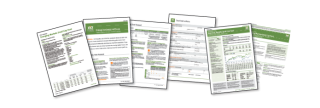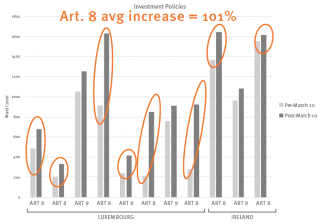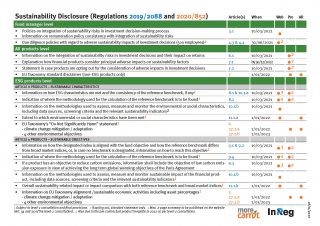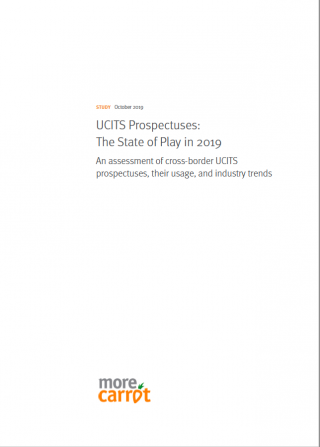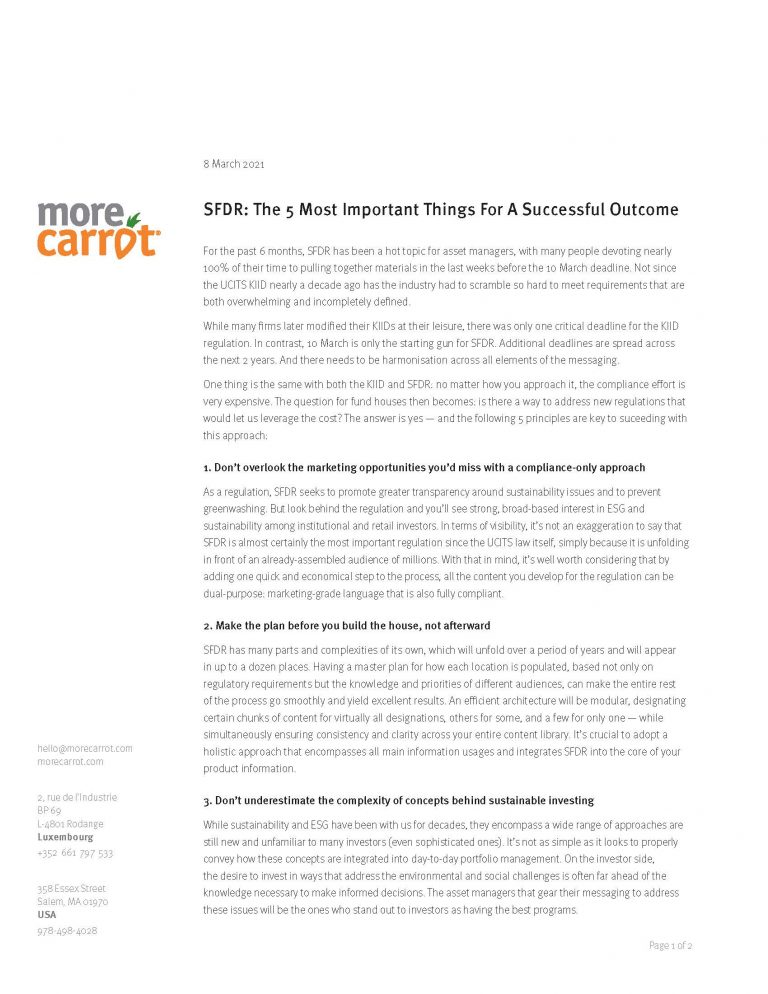
Case study
SFDR: The 5 Most Important Things For A Successful Outcome
8 March 2021
For the past 6 months, SFDR has been a hot topic for asset managers, with many people devoting nearly 100% of their time to pulling together materials in the last weeks before the 10 March deadline. Not since the UCITS KIID nearly a decade ago has the industry had to scramble so hard to meet requirements that are both overwhelming and incompletely defined.
While many firms later modified their KIIDs at their leisure, there was only one critical deadline for the KIID regulation. In contrast, 10 March is only the starting gun for SFDR. Additional deadlines are spread across the next 2 years. And there needs to be harmonisation across all elements of the messaging.
One thing is the same with both the KIID and SFDR: no matter how you approach it, the compliance effort is very expensive. The question for fund houses then becomes: is there a way to address new regulations that would let us leverage the cost? The answer is yes — and the following 5 principles are key to succeeding with this approach:
- Don’t overlook the marketing opportunities you’d miss with a compliance-only approach
As a regulation, SFDR seeks to promote greater transparency around sustainability issues and to prevent greenwashing. But look behind the regulation and you’ll see strong, broad-based interest in ESG and sustainability among institutional and retail investors. In terms of visibility, it’s not an exaggeration to say that SFDR is almost certainly the most important regulation since the UCITS law itself, simply because it is unfolding in front of an already-assembled audience of millions. With that in mind, it’s well worth considering that by adding one quick and economical step to the process, all the content you develop for the regulation can be dual-purpose: marketing-grade language that is also fully compliant. - Make the plan before you build the house, not afterwards
SFDR has many parts and complexities of its own, which will unfold over a period of years and will appear in up to a dozen places. Having a master plan for how each location is populated, based not only on regulatory requirements but the knowledge and priorities of different audiences, can make the entire rest of the process go smoothly and yield excellent results. An efficient architecture will be modular, designating certain chunks of content for virtually all designations, others for some, and a few for only one — while simultaneously ensuring consistency and clarity across your entire content library. It’s crucial to adopt a holistic approach that encompasses all main information usages and integrates SFDR into the core of your product information. - Don’t underestimate the complexity of concepts behind sustainable investing
While sustainability and ESG have been with us for decades, they encompass a wide range of approaches are still new and unfamiliar to many investors (even sophisticated ones). It’s not as simple as it looks to properly convey how these concepts are integrated into day-to-day portfolio management. On the investor side, the desire to invest in ways that address the environmental and social challenges is often far ahead of the knowledge necessary to make informed decisions. The asset managers that gear their messaging to address these issues will be the ones who stand out to investors as having the best programs. - Walk the talk
Although many fund houses integrate ESG factors into their portfolio management with utmost professionalism, fewer apply basic ESG principles in other parts of their business, including how well they communicate to people “outside the building”. Making documents like prospectuses and shareholder notices more accessible to broader audiences is a way to signal that the asset manager themselves practices the type of respect and inclusion consistent with ESG principles. - Before you start, speak with an expert
Most firms have plenty of industry expertise under their own roof. Very few have individuals with the specialised communication skills necessary to transform that information in ways that make it readable to the full range of investors — while also addressing every dimension that matters to the legal, risk, compliance, product, operations and tax departments, not to mention regulators. The scope and complexity of SFDR, the need to integrate it into already-complex existing materials, and the high stakes for the results make SFDR a timely topic to discuss how best to analyse and organise this wide range of information and to build a robust and systematic document architecture that can become a true asset for the business.
# # #
